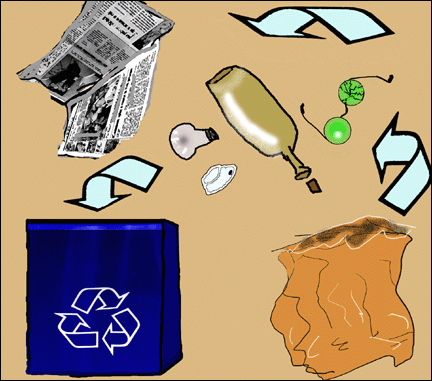University sets recycling record in November

Harvard set a recycling record in November, collecting 311 tons – the largest monthly volume ever and 34 percent of the University’s total waste for that month, according to Rob Gogan, supervisor of recycling and waste management for Facilities Maintenance Operations.
Gogan said Harvard has been increasing its recycling rate steadily since the city of Cambridge passed an ordinance requiring businesses and residents to begin recycling waste in 1991. Prior to that, Gogan said, Harvard had recycled just 1 percent of its waste.
Fiscal 2002, which ended last June 30, saw Harvard’s highest annual recycling rate so far, Gogan said, with 32 percent of the waste generated at Harvard being picked up for recycling. Despite the gains in recent years, Gogan said he believes there’s still lots of room for improvement.
This year saw the inauguration of the Resource Efficiency Program, which hires students to spur environmental consciousness in undergraduate dormitories. The dorms are places where recycling has traditionally been low as students focus on studies, activities, and things other than how they dispose of papers, bottles, and cans. With that new program and encouraging early indications from the rest of the University, Gogan said he expects this year to be better than last year. He set a goal to recycle 40 percent by 2004 and 50 percent by 2005.
Those goals are not pie-in-the-sky targets, however. Not only do other institutions routinely recycle 50 percent of their waste, Gogan said, but the state will require, by 2010, that recycling rates reach 70 percent.
“I think we need to stretch a little bit,” Gogan said. “I hope we make it, but if we don’t, we’ll still benefit from the stretch.”
Harvard doesn’t need to look to places such as the University of Massachusetts at Amherst, the University of Michigan, and the University of Minnesota – which all recycle more than 50 percent of their waste – for recycling success stories. Here on campus, he said, there are already triumphs. The Biological Laboratories and the Radcliffe Institute for Advanced Study both have recycling rates that are above 70 percent.
It isn’t a simple matter of emulating those two locations, however, Gogan said, because different parts of the University face different challenges. The age of the buildings, their historic nature, and the lack of loading docks and central collection facilities mean each part of campus will have to seek its own solution.
“Like everything else about Harvard, it’s very hard to generalize,” Gogan said. “It has to do with a lot of factors outside of people’s control.”
Not only are recycling rates up, but the overall volume of trash generated at the University is down, Gogan said. In this fiscal year’s first quarter, July, August, and September, tonnage discarded dropped about 7 percent, which perhaps reflects people being more careful with resources because of the economic downturn.
Harvard currently recycles at about the same rate as does the city of Cambridge, Gogan said, and he expects the city to begin increasing its recycling rate in anticipation of the 2010 deadline. With so many Harvard employees and faculty living in Cambridge, it’s just natural that Harvard keeps up.
“I’m anticipating that as the city ratchets up its commitment to recycling and waste reduction, we’re going to have to do as good a job,” Gogan said. “I’d like to see 50 percent and keep going.”




